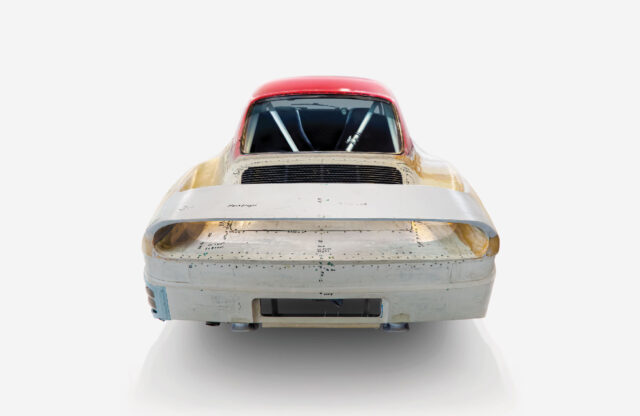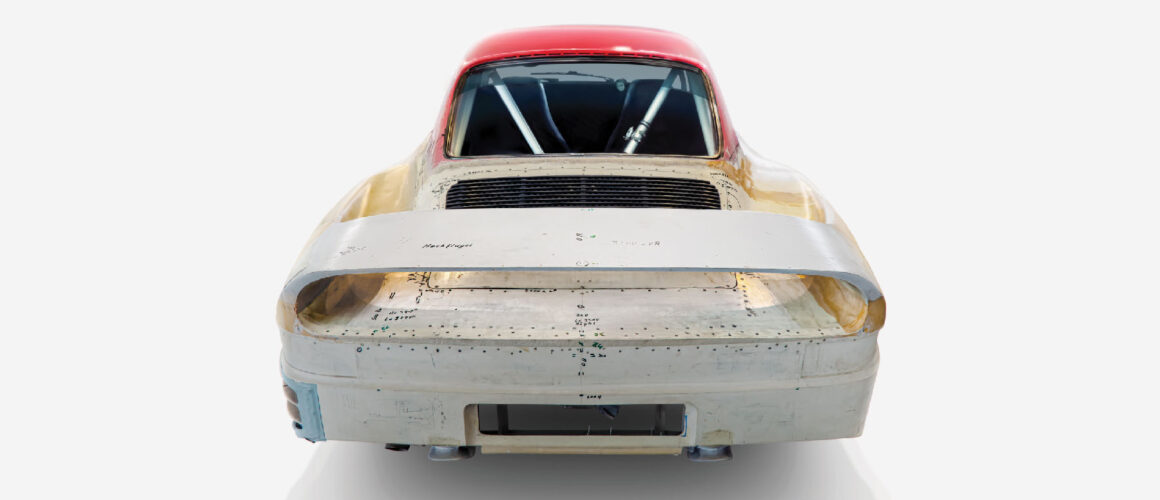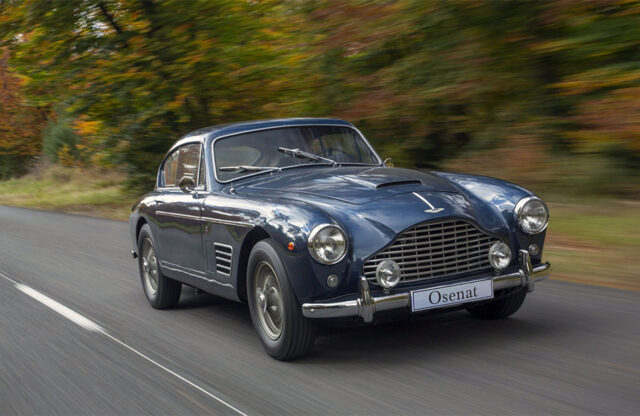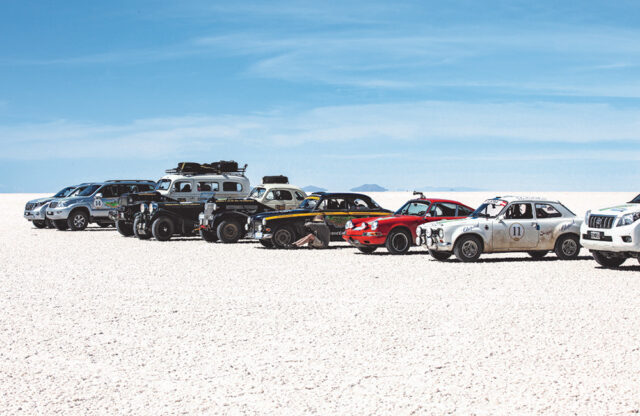To car-crazy teenagers of the mid-1980s the Porsche 959 represented cutting-edge technology, parameter-shifting performance and the ultimate evolution of Porsche style. Finally, here was a car stirring enough to usurp the Lamborghini Countach’s long-held peak wall-poster status. For those of us who in 1985 marvelled at its four signature slatted air vents (one at each corner), beautifully sculpted side inlets and integrated rear wing, it is somewhat sobering to realise that 40 years have passed since this automotive icon first appeared.
In celebration of the anniversary, London-based digital studio INK orchestrated a collaborative exhibition aptly titled Wundercar. With the promise of original works by internationally renowned artists Benedict Radcliffe, Chris Labrooy, Benedict Redgrove, Colorsponge, Wooden Gun and INK to enthuse over, Magneto magazine made our way to Shoreditch, London for the opening night.
On a normal day, Benedict Radcliffe’s workshop is all sparks, grit and creative industry, but for the three-day event it was transformed into an edgy exhibition area. Posh lager, wine and cocktails – all in cans – were refreshingly égalité.
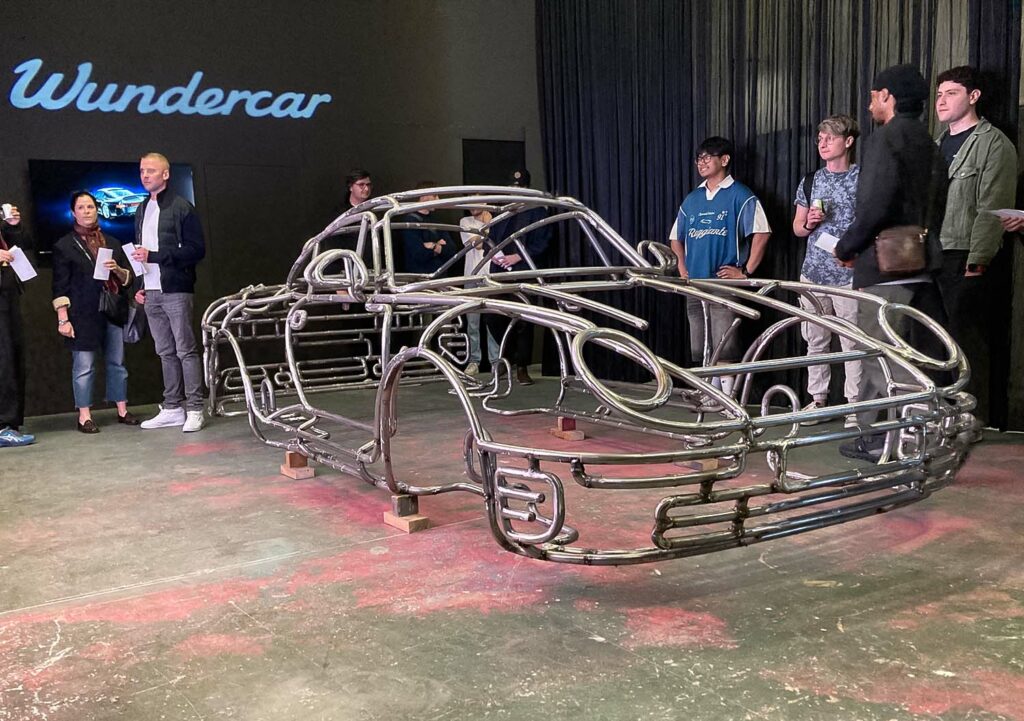
Not surprisingly, Radcliffe’s life-size ‘wireframe’ 959 sculpture formed the centrepiece of the exhibition. Crafted in precision bent and welded 32mm-diameter steel tubes, it looked substantial and heavy yet spaceframe-light at the same time. The piece is already three years in the making, and when asked why the Porsche’s signature side air inlets were ‘missing’, especially as all of the icon’s other design cues were present and correct, Radcliffe admitted that it was not quite finished. Once these aspects are added, and the genuine 959 wheels are properly attached, the sculpture will get its welds smoothed over and have a luscious lick of silver-hued paint applied. In the raw steel, though, the work is so pure and honest in a ‘truth to material’ kind of way that painting will almost be a pity.
Using every digital tool in its considerable arsenal, creative tech specialist INK’s photography and premier CGI visuals formed the backdrop to the Radcliffe car. Striking studio stills of the 1983 Gruppe B concept car, the multi-hued styling mock-up and the Dakar-winning 959 were the subjects of a series titled The Prototype, The Mule and The Dakar. Supplementing those was a CGI set of de-liveried 961 images that highlighted the brutal beauty of Porsche’s Le Mans-specification ‘959’ – a stunning addition to INK’s renowned Plainbodies series.
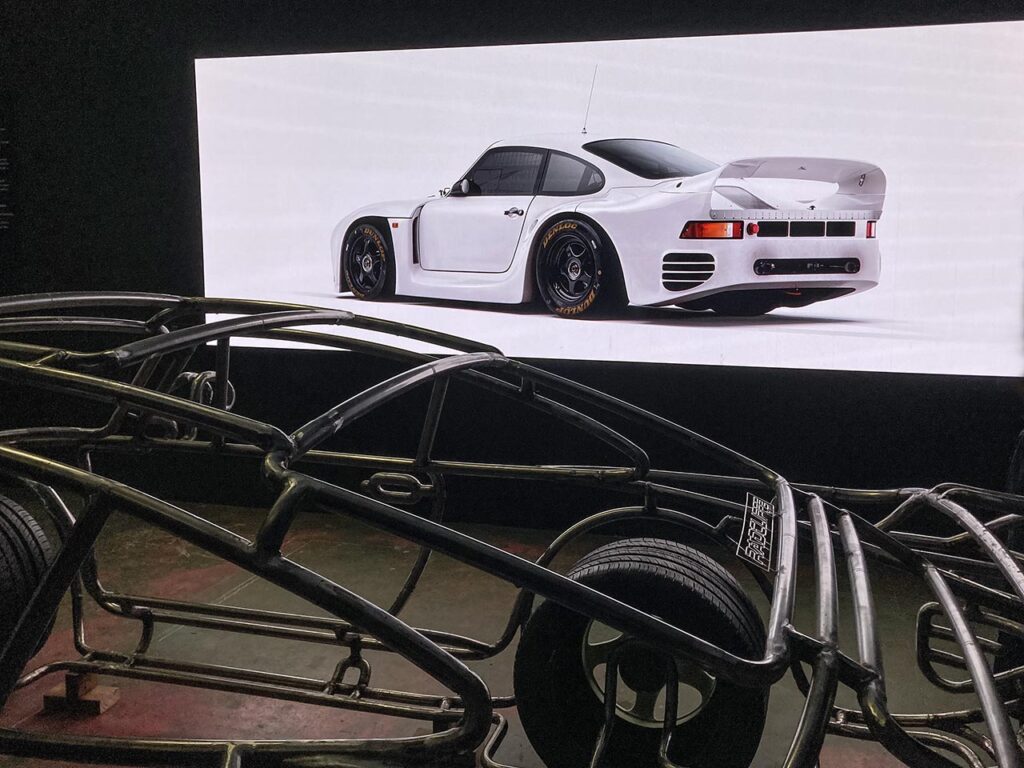
Equally alluring were INK’s other graphic creations, which included animations spotlighting the icon’s innovative technology, materials and design with a pleasing nod to Porsche’s bespoke Sonderwunsch programme. That kind of attention to detail proved the studio’s brand-immersion was more than skin deep.
In the curtained-off back room, usually Radcliffe’s office, the immersion was even more tangible – and just a little trippy, too. INK’s visualisation of recorded audio and telemetry collected from a 959 while lapping Silverstone was appropriately titled Metrics, but it could just as well have been Matrix. It is true that the distortion techniques applied to the engine sounds resulted in a loss of automotive purity, but the pulsating final effect was several styles of synthesised sci-fi surrealism. Imagine 1992’s The Lawnmower Man meets Jean-Michel Jarre at his most experimental.
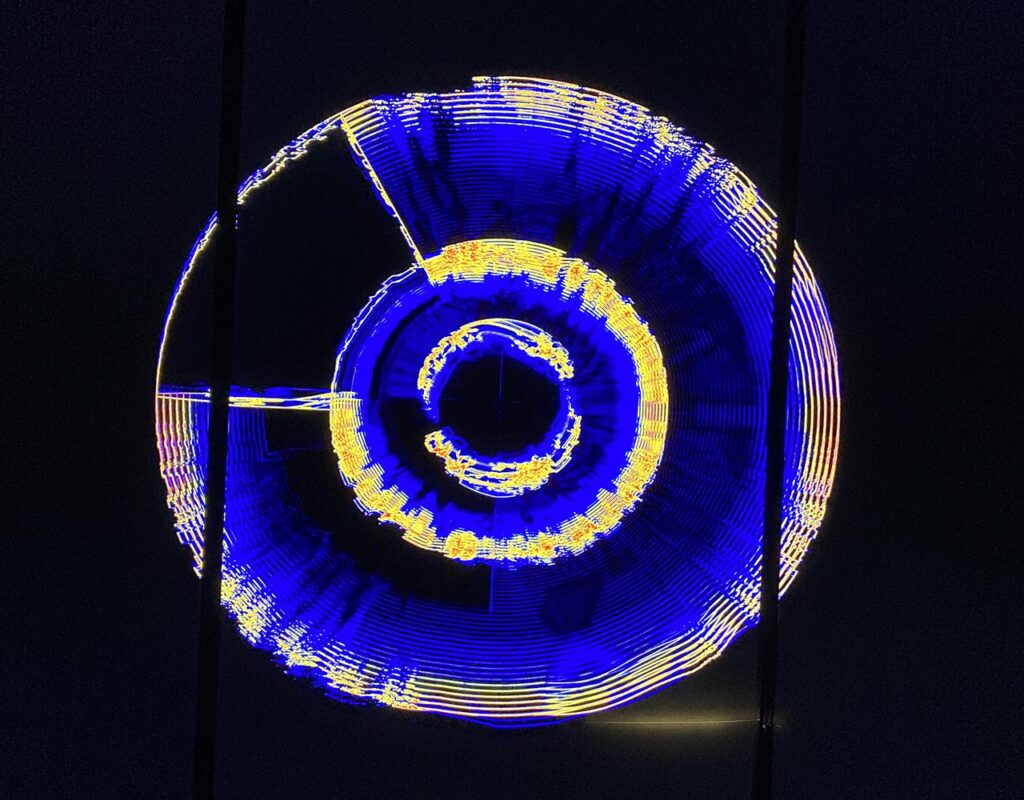
Emerging from the brain-warping darkroom, I headed over to Wundervision with its 1987-model monitor displaying a highly specific image-generating prompt in nostalgic green text. A specially trained LoRA AI model pumped out stylised studio scenes of a Porsche 959 in a “dreamy, cinematic mood, evoking an emotionally charged 1980s synthase aesthetic”. The weird and not-so-wonderful 959 ‘tributes’ it produced proved to be less like art and more like parodies. But then parody is art, right?

Traditionally framed and mounted alongside each other on the opposite wall were the unconventional digital interpretations of artists Colorsponge (Carlos Pecino), Chris Labrooy and Wooden Gun. Respectively, a 959 in a lush jungle; a de-wheeled 959 up on the lift, not in a workshop but in a pastel-hued ‘wellness centre’ for cars; and an exploration of the 959’s “timeless futurism, rendered through visual silence, shadow and light”. All three contributions were the result of fertile minds.

As promised, the exhibition offered a unique opportunity to view one of the world’s most iconic sports cars through the lens of contemporary artists. As a concept it is worthy of a larger stage and additional creative contributions. Here’s a thought: the F40 turns 40 in 2027.
Wundercar runs from May 22-25, 2025.
For more information click here.
